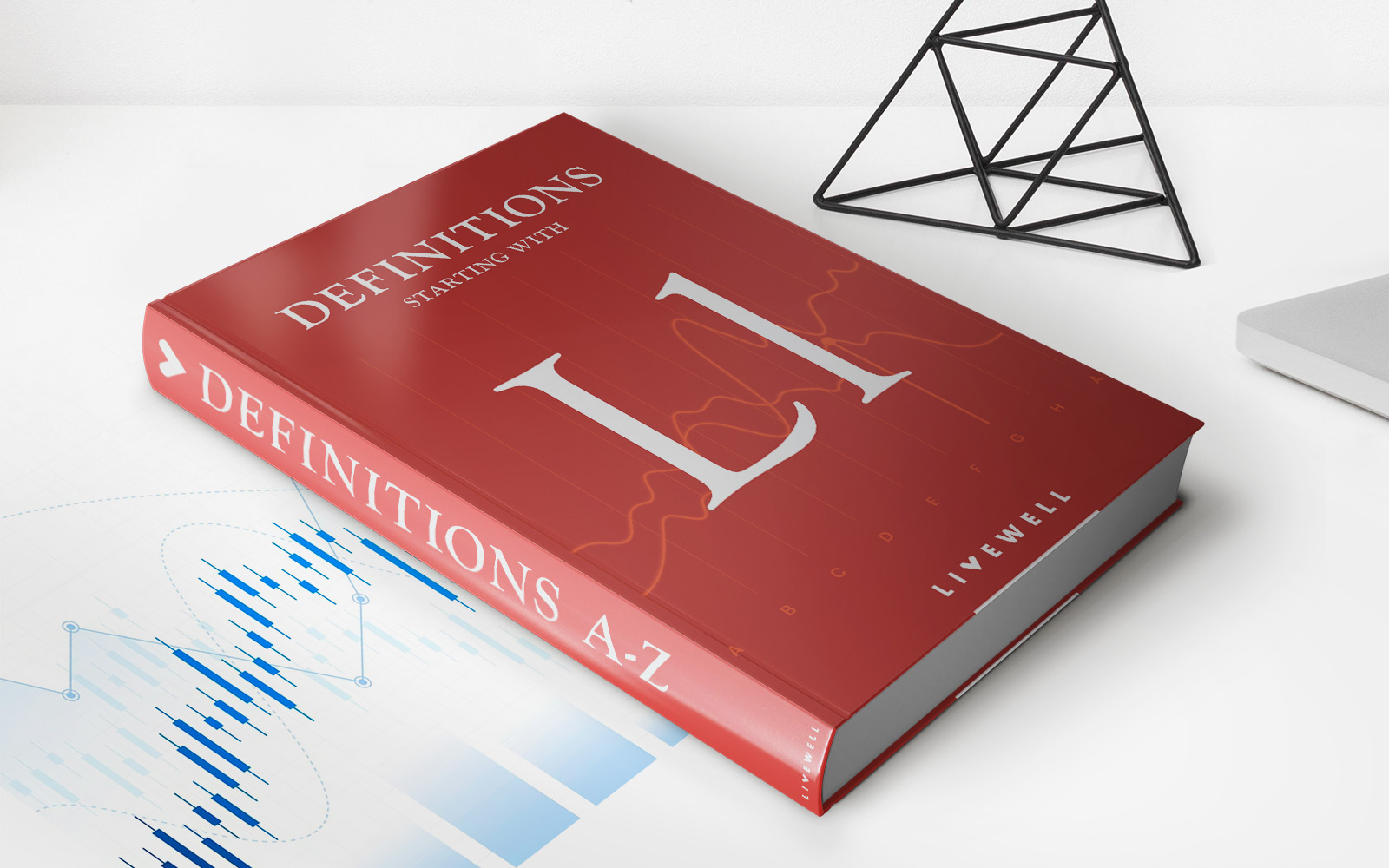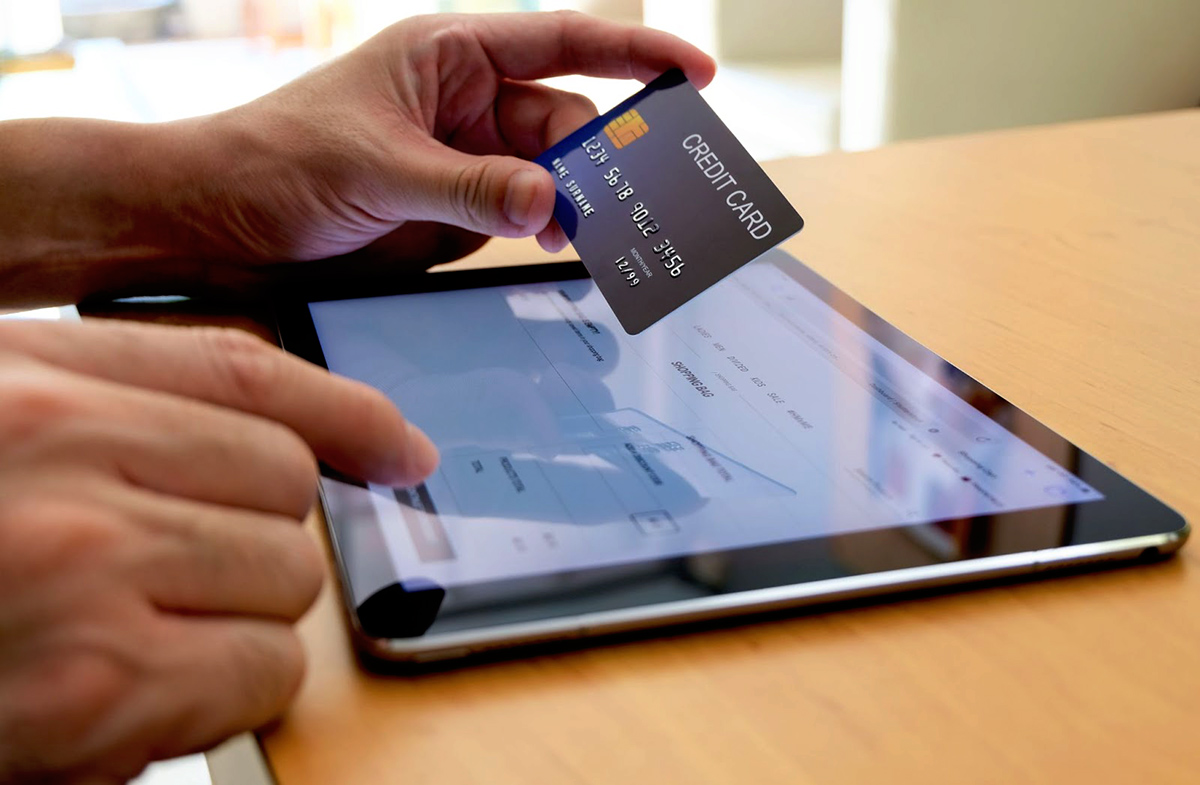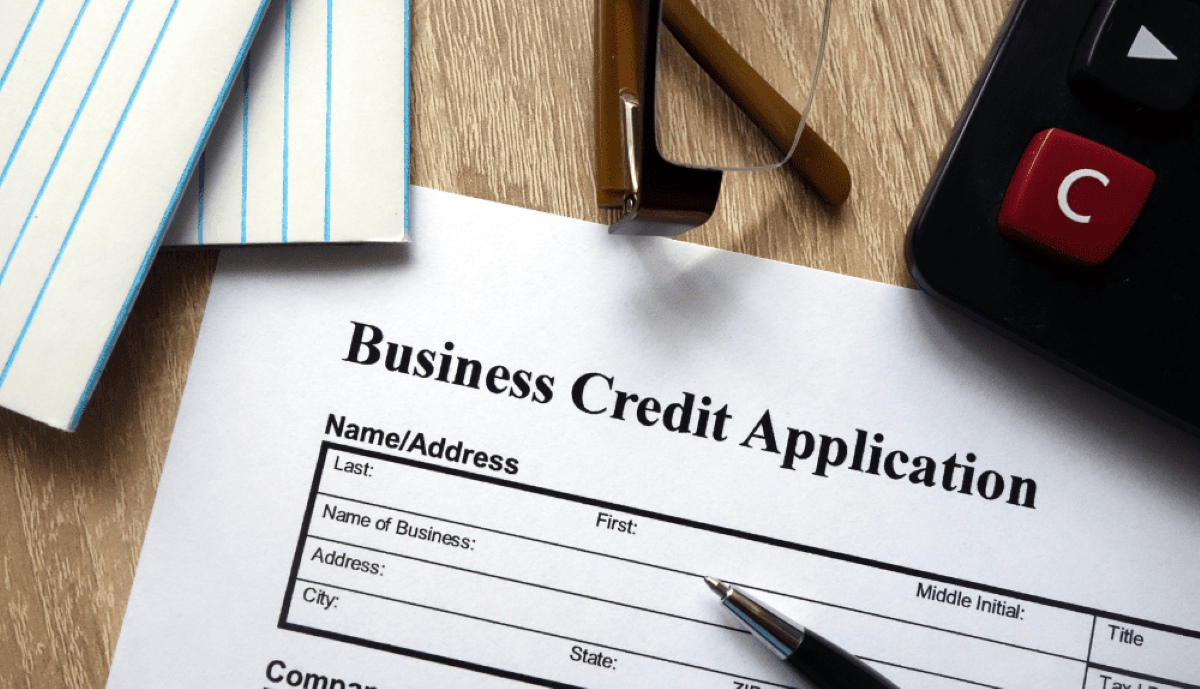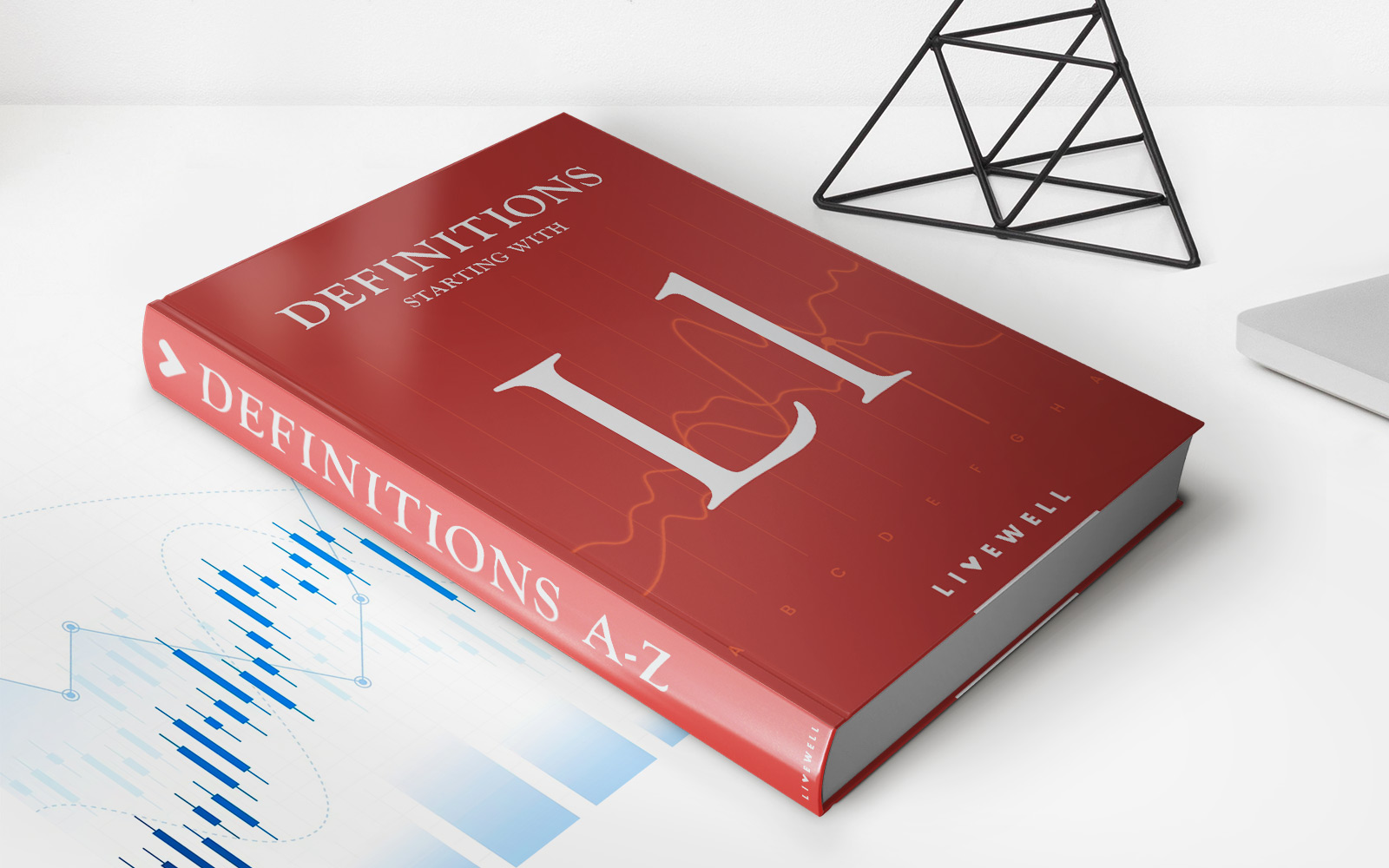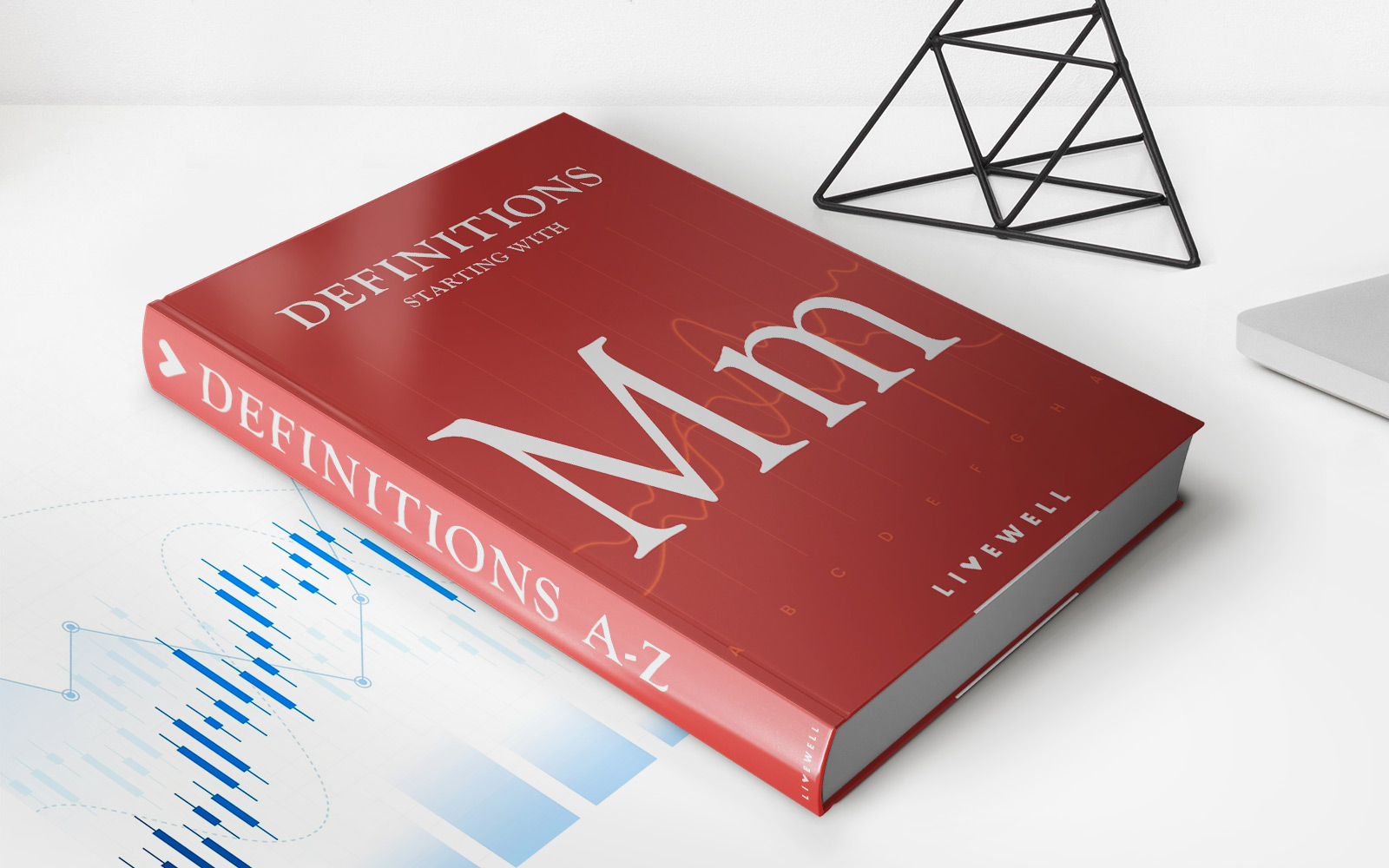

Finance
What Is Level 3 Credit Card Processing
Published: October 26, 2023
Learn about level 3 credit card processing in the finance industry. Understand the benefits and features of this advanced payment solution.
(Many of the links in this article redirect to a specific reviewed product. Your purchase of these products through affiliate links helps to generate commission for LiveWell, at no extra cost. Learn more)
Table of Contents
- Introduction
- Understanding Credit Card Processing Levels
- Level 3 Credit Card Processing Explained
- Benefits of Level 3 Credit Card Processing
- Eligibility for Level 3 Credit Card Processing
- How Level 3 Credit Card Processing Works
- Examples of Level 3 Credit Card Transactions
- Choosing a Level 3 Credit Card Processing Provider
- Conclusion
Introduction
Credit card processing is an essential component of modern financial transactions, allowing businesses to accept payments from customers smoothly and securely. However, not all credit card processing methods are created equal. One option that offers unique advantages for businesses, especially those dealing with large transactions and corporate customers, is Level 3 credit card processing.
In this article, we will dive into the world of Level 3 credit card processing, explaining what it is, how it works, and the benefits it offers. Whether you are a business owner, a financial professional, or simply curious about the intricacies of credit card processing, this article will provide you with a comprehensive understanding of Level 3 processing and its role in the financial landscape.
So, what sets Level 3 processing apart from traditional credit card processing? In essence, Level 3 processing is designed to capture and transmit more detailed transaction data compared to the standard Level 1 and Level 2 processing. While Level 1 processing collects basic information such as the cardholder’s name, card number, and transaction amount, Level 3 processing delves deeper and captures additional data points that are particularly relevant for business-to-business (B2B) transactions.
The additional information collected in Level 3 processing includes line item details such as product codes, quantities, and unit prices, as well as shipping information, tax details, and more. By providing this granular level of data, Level 3 processing enables businesses to enjoy lower interchange rates and potentially significant cost savings.
In the following sections, we will explore the details of Level 3 credit card processing, including its eligibility requirements, how it works, and the benefits it brings to businesses. Whether you are a business owner seeking more affordable processing rates or a financial professional looking for ways to optimize payment processing, this article will equip you with the knowledge you need to make informed decisions.
Understanding Credit Card Processing Levels
Before diving into the specifics of Level 3 credit card processing, it is essential to understand the different levels of credit card processing and how they function. At its core, credit card processing involves the transmission of payment information from the merchant to the acquiring bank, which then communicates with the issuing bank to authorize the transaction.
The credit card processing levels refer to the amount of transaction data that is captured and transmitted. The higher the processing level, the more detailed the information that is collected and sent to the banks. Let’s take a closer look at the three main levels:
- Level 1: This is the most basic level of credit card processing, typically used by small businesses and retailers. Level 1 processing involves capturing basic transaction data, such as the cardholder’s name, card number, expiration date, and transaction amount. This level is suitable for low-value, consumer-to-business transactions.
- Level 2: Level 2 processing introduces additional data elements that are relevant to business customers and government entities. In addition to the information collected in Level 1, Level 2 processing includes tax information, customer codes, and merchant postal codes. This level is commonly utilized by businesses involved in corporate purchasing and procurement, allowing for more comprehensive reporting.
- Level 3: Level 3 credit card processing goes a step further by capturing extensive line item details and transaction information. This level is specifically geared towards business-to-business (B2B) transactions, where comprehensive data is crucial. In addition to the data collected in Levels 1 and 2, Level 3 processing includes line item details such as product codes, quantities, unit prices, shipping information, and more. This level requires advanced technology and software integration to handle the increased data elements effectively.
It is important to note that processing levels are not determined by the credit card companies themselves but rather by the payment processors and software providers. Not all payment processors support Level 3 processing, so it is essential to choose a processing provider that offers this capability when dealing with B2B transactions.
In the next section, we will explore Level 3 credit card processing in more detail, including its benefits and eligibility requirements. Understanding these details will enable businesses to make informed decisions about whether Level 3 processing is suitable for their specific needs and how it can help optimize their payment processing.
Level 3 Credit Card Processing Explained
Level 3 credit card processing is a specialized method of payment processing that focuses on capturing and transmitting detailed transaction data for business-to-business (B2B) transactions. This level of processing goes beyond basic transaction information and collects granular data such as line item details, shipping information, and tax details.
The main aim of Level 3 processing is to provide enhanced transaction visibility and transparency for both buyers and sellers involved in B2B transactions. By capturing and transmitting this extensive data, businesses can benefit from lower interchange rates, which are the fees paid by the merchant to the issuing bank for processing the transaction.
Level 3 credit card processing requires advanced technology and software integration to handle the increased data elements effectively. Payment gateways and software solutions that support Level 3 processing can automatically populate the necessary data fields and transmit the information to the acquiring bank.
One of the key requirements for Level 3 processing is the use of purchasing or corporate cards. These cards, issued by banks to businesses, offer increased functionality and data capture capabilities compared to consumer credit cards. Purchasing cards are commonly used by organizations for procurement and B2B transactions, making them an ideal fit for Level 3 processing.
It’s important to note that not all businesses are eligible for Level 3 credit card processing. Typically, only businesses involved in B2B transactions, particularly those with high-value sales, can take advantage of Level 3 processing. Furthermore, the use of Level 3 processing is subject to approval from the merchant’s payment processor and card acquirer.
Implementing Level 3 processing can bring significant benefits to businesses engaged in B2B transactions. By providing comprehensive transaction data, Level 3 processing offers improved visibility into purchasing patterns, better reporting capabilities, and the potential for lower interchange rates. These benefits can result in substantial cost savings and improved financial management.
In the next section, we will explore the specific benefits of Level 3 credit card processing in more detail, highlighting how it can optimize payment processing for businesses of all sizes and industries.
Benefits of Level 3 Credit Card Processing
Level 3 credit card processing offers several key benefits for businesses engaged in B2B transactions. By capturing and transmitting detailed transaction data, businesses can unlock a range of advantages that can optimize their payment processing and financial management. Let’s explore some of the key benefits:
- Lower interchange rates: One of the most significant benefits of Level 3 processing is the potential for lower interchange rates. Interchange rates are the fees paid by the merchant to the issuing bank for processing the transaction. By providing comprehensive transaction data, Level 3 processing enables businesses to qualify for lower interchange rates, resulting in substantial cost savings.
- Improved reporting and analysis: Level 3 processing collects and provides extensive transaction data, allowing businesses to gain deeper insights into their purchasing patterns and financial performance. This data can be used for robust reporting and analysis, enabling businesses to make more informed decisions about their operations and improve financial management.
- Enhanced data security: Level 3 processing offers enhanced security measures and data protection for B2B transactions. The additional data elements collected help improve transaction verification and mitigate the risk of fraud. Businesses can have peace of mind knowing that their transactions are protected and secure.
- Streamlined purchasing process: Level 3 processing simplifies the purchasing process for both buyers and sellers. The detailed line item information captured enables buyers to easily reconcile and track their purchases, improving their accounting and procurement processes. Sellers can also benefit from faster and more efficient order processing, reducing administrative tasks and increasing customer satisfaction.
- Competitive advantage: Implementing Level 3 processing can give businesses a competitive edge in the B2B marketplace. By offering lower transaction costs and improved reporting capabilities, businesses can attract more corporate customers and strengthen their relationships with existing clients. This advantage can help businesses grow their market share and increase profitability.
It’s important to note that the specific benefits experienced may vary depending on the individual business and its unique needs. However, the overarching advantages of Level 3 credit card processing make it an attractive option for businesses engaged in B2B transactions.
In the next section, we will explore the eligibility requirements for Level 3 credit card processing and discuss how businesses can determine if they qualify for this specialized payment processing method.
Eligibility for Level 3 Credit Card Processing
To take advantage of Level 3 credit card processing, businesses must meet certain eligibility requirements. While the specific criteria may vary depending on the payment processor and card acquirer, there are general factors that determine eligibility for Level 3 processing. Let’s take a closer look:
Business Type: Level 3 processing is primarily designed for businesses engaged in B2B transactions. This includes companies involved in wholesale, distribution, manufacturing, government contracting, and other industries where high-value, business-to-business sales are common. Retail and consumer-focused businesses may not meet the eligibility requirements for Level 3 processing.
Purchasing Cards: Level 3 processing requires the use of purchasing or corporate cards for B2B transactions. These cards offer increased functionality and data capture capabilities compared to consumer credit cards, making them suitable for Level 3 processing. Businesses that regularly accept purchasing or corporate cards are more likely to be eligible for Level 3 processing.
Payment Processor and Card Acquirer: Not all payment processors and card acquirers support Level 3 processing. Businesses must ensure that their chosen payment processor has the capability to handle Level 3 transactions. It is essential to partner with reputable payment processors or financial institutions that specialize in B2B transactions and offer Level 3 processing services.
Transaction Volume and Value: The transaction volume and value also play a role in eligibility for Level 3 processing. Typically, businesses that process a significant number of high-value transactions are more likely to qualify for Level 3 processing. However, there is no specific threshold, and eligibility may vary based on the payment processor’s requirements.
Integration and Technology: Level 3 credit card processing requires advanced technology and software integration to handle the expanded data elements effectively. Businesses must ensure that their payment gateway, software, and point-of-sale (POS) systems support Level 3 processing. Integration with the payment processor’s API or software development kit (SDK) may be necessary.
It is important for businesses interested in Level 3 processing to consult with their payment processor or financial institution to determine their eligibility. They can provide specific requirements and guide businesses through the application process.
While Level 3 processing offers significant benefits for B2B businesses, it may not be suitable or available for all companies. It is essential to assess whether the eligibility criteria align with the business’s needs and financial objectives before pursuing Level 3 credit card processing.
In the next section, we will explore how Level 3 credit card processing works and the steps involved in the payment process.
How Level 3 Credit Card Processing Works
Level 3 credit card processing involves a specific set of steps to capture and transmit detailed transaction data for B2B transactions. Let’s walk through the process to understand how Level 3 processing works:
- Data Collection: In Level 3 processing, additional data elements beyond basic transaction information are collected. This includes line item details such as product codes, quantities, unit prices, shipping information, and tax details. This data is essential for providing comprehensive transaction visibility and qualifying for lower interchange rates.
- Data Integration: The collected data needs to be integrated into the payment processing system. This typically involves using payment gateways and software solutions that support Level 3 processing. The integration ensures that the data is accurately captured and transmitted during the payment process.
- Merchant Processing: When a business receives a credit card payment from a B2B customer, the full transaction data, including the line item details, is collected at the point of sale or through an online payment gateway. The payment processor then verifies the transaction and initiates the authorization process.
- Authorization and Verification: The acquiring bank, which processes the payment, communicates with the issuing bank to verify the transaction details. The comprehensive line item details provided in Level 3 processing help validate the transaction and reduce the risk of fraud. Once authorized, the payment is approved, and the transaction proceeds.
- Data Transmission: After the authorization, the detailed transaction data, including the line item details and other relevant information, is transmitted from the merchant’s payment system to the acquiring bank. This data is then forwarded to the issuing bank for reconciliation and reporting purposes.
- Lower Interchange Rates: The capturing and transmission of comprehensive transaction data in Level 3 processing allow businesses to qualify for lower interchange rates. The issuing bank evaluates the data provided and determines the appropriate interchange rate for the transaction. This can result in significant cost savings for businesses engaged in B2B transactions.
It’s important to note that Level 3 processing requires advanced technology and software integration. Businesses must ensure their payment processors and software solutions support Level 3 processing to effectively capture, integrate, and transmit the necessary data elements.
By following this process, businesses engaged in B2B transactions can leverage Level 3 credit card processing to enjoy lower interchange rates and benefit from enhanced transaction visibility and reporting capabilities.
In the next section, we will explore some examples of Level 3 credit card transactions and how they differ from traditional credit card transactions.
Examples of Level 3 Credit Card Transactions
Level 3 credit card transactions are specifically tailored for business-to-business (B2B) transactions and involve the capture and transmission of detailed transaction data. Let’s explore some examples to understand how Level 3 credit card transactions differ from traditional credit card transactions:
1. Wholesale Supplier: Imagine a wholesale supplier that provides materials to a construction company. In a traditional credit card transaction, the supplier would collect basic transaction information like the cardholder’s name, card number, and transaction amount. However, with Level 3 processing, the supplier can capture additional line item details, such as the specific materials purchased, quantities, unit prices, shipping information, and even tax details. This allows the supplier to provide a comprehensive invoice with itemized details, making it easier for the construction company to track and reconcile their purchases.
2. Government Contracting: Government agencies often use Level 3 credit card processing for their purchasing needs. Consider a government agency that procures office supplies from a supplier. In a traditional credit card transaction, basic information like the cardholder’s name, card number, and total transaction amount would be collected. However, with Level 3 processing, the agency can provide additional data, including the product codes, quantities, unit prices, delivery details, and tax information. This level of detail helps both the agency and the supplier in tracking expenses, managing budgets, and ensuring compliance with procurement guidelines.
3. Corporate Travel Expenses: Level 3 processing is also beneficial for managing corporate travel expenses. For example, a company may have employees who frequently travel and use their corporate credit cards for expenses such as hotel bookings, transportation, and meals. With Level 3 processing, the company can capture and transmit not only the basic transaction information but also the individual expenses incurred during the trip. This includes details like the specific hotel charges, transportation costs, and meal expenses. This level of detail allows the company’s finance department to accurately track and allocate expenses for reimbursement and accounting purposes.
These examples illustrate how Level 3 credit card transactions provide a more comprehensive view of B2B transactions compared to traditional credit card processing. The additional data elements captured in Level 3 processing offer businesses improved visibility into their purchasing patterns, better reporting capabilities, and the potential for lower interchange rates.
In the next section, we will discuss considerations for choosing a Level 3 credit card processing provider to maximize the benefits for your business.
Choosing a Level 3 Credit Card Processing Provider
When it comes to choosing a Level 3 credit card processing provider, businesses need to consider several factors to ensure they receive the best service and maximize the benefits of Level 3 processing. Here are some key considerations to keep in mind:
1. Compatible Payment Processor: Not all payment processors support Level 3 credit card processing. It is crucial to partner with a payment processor that has the capability to handle Level 3 transactions and integrate with your existing systems. Research and compare different payment processors to find one that offers reliable Level 3 processing services.
2. Software Integration: Ensure that the Level 3 credit card processing provider’s software integrates seamlessly with your existing systems, such as your payment gateway, point-of-sale (POS) system, or e-commerce platform. Compatibility and ease of integration can streamline your payment processing operations and reduce any operational disruptions.
3. Data Security and Compliance: Data security is of utmost importance when selecting a Level 3 processing provider. Ensure that the provider adheres to industry-standard security protocols and complies with Payment Card Industry Data Security Standards (PCI DSS) requirements. Protecting sensitive cardholder data is essential to maintain customer trust and prevent potential data breaches.
4. Pricing Structure: Compare pricing plans and fee structures offered by different Level 3 credit card processing providers. Look for a provider who offers competitive rates and transparent pricing, including any additional fees associated with Level 3 processing. Consider your business’s transaction volume and value to determine which pricing structure best suits your needs.
5. Customer Support: Evaluate the level of customer support provided by the Level 3 processing provider. A reliable provider should offer responsive and knowledgeable customer support to address any technical issues, answer questions, and assist you throughout the setup and ongoing usage of Level 3 processing.
6. Reputation and Experience: Consider the reputation and experience of the Level 3 processing provider. Look for providers with a solid track record in the industry and positive customer reviews. A provider with experience in serving businesses similar to yours may better understand your unique requirements and offer tailored solutions.
7. Scalability and Flexibility: Consider your business’s future growth plans and ensure that the Level 3 processing provider can accommodate your evolving needs. Scalability and flexibility are essential, as your transaction volume and value may increase over time. Choose a provider that can scale with your business and adapt to changing industry trends.
By carefully considering these factors, businesses can select a Level 3 credit card processing provider that meets their specific needs and helps optimize their B2B payment processing operations. Taking the time to research and compare providers will ensure that you make an informed decision and maximize the benefits of Level 3 processing for your business.
Next, we will conclude our article on Level 3 credit card processing, summarizing the key points discussed.
Conclusion
Level 3 credit card processing offers businesses engaged in B2B transactions a powerful tool to optimize their payment processing operations. By capturing and transmitting detailed transaction data, businesses can benefit from lower interchange rates, improved reporting capabilities, enhanced security, and streamlined purchasing processes.
Throughout this article, we have explored the various aspects of Level 3 credit card processing, including its definition, benefits, eligibility requirements, and how it works. We have seen how Level 3 processing goes beyond traditional credit card processing by capturing line item details, shipping information, and tax details, providing businesses with valuable insights into their transactions.
Businesses involved in B2B transactions, particularly those with high-value sales, can consider Level 3 credit card processing to unlock cost savings and gain a competitive advantage. However, it is important to ensure eligibility by meeting the requirements of the payment processor, utilizing purchasing or corporate cards, and integrating the necessary technology and software.
When selecting a Level 3 credit card processing provider, businesses should consider factors such as compatibility with existing systems, data security and compliance, pricing structures, customer support, reputation, and scalability. Careful consideration of these elements will help businesses choose a provider that best suits their specific needs and objectives.
In conclusion, Level 3 credit card processing is a valuable solution for businesses engaged in B2B transactions, enabling them to capture and transmit detailed transaction data for improved visibility, lower costs, and enhanced financial management. By leveraging Level 3 processing, businesses can optimize their payment processing operations and enjoy the benefits of comprehensive transaction data.
As businesses continue to evolve, Level 3 processing will play an increasingly important role in streamlining B2B transactions and driving efficiency. By staying informed and keeping pace with the advancements in payment processing, businesses can stay competitive and foster growth in the dynamic financial landscape.


